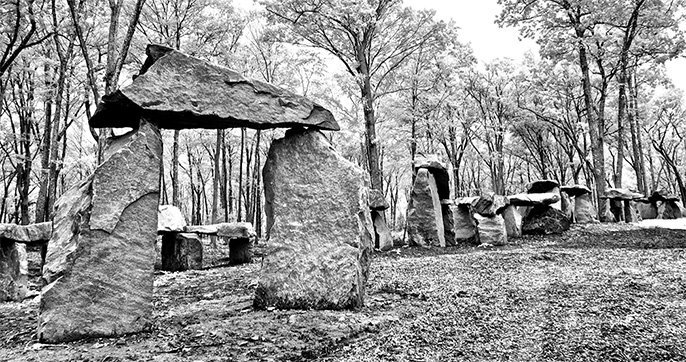Amazing panoramas (Mt. Everest and others)
May 28, 2003 | Edward Tufte
7 Comment(s)
Josh Silverman of Rockefeller University has provided this link to a remarkable panoramic view from the summit of Mt. Everest. It is, as he notes, “an illustration of the beautiful complexity inherent in the natural world.”
There are many other excellent panoramas also at the site. The views can be scrolled and zoomed. Quicktime 5 is needed and a great big screen is nice.
Topics: E.T.




A more limited but similarly amazing panorama technology is in use on photographer Carl Heilman’s site: he provides panoramas from the summits of several Adirondack mountains, Mt. Washington in New Hampshire, the Grand Canyon, and other sites.
http://www.carlheilman.com/virtual.html
Wow. These are the first high-resolution VR panoramas I’ve seen, beautifully-presented (the web page even automatically maximizes the window size). Nice job.
Years ago I discovered a startling effect (a friend refers to it as The Yost Effect 😉 that works particularly well with these large panoramas: if you open only one eye and position that eye directly over the optical center of a photograph at a distance that is correct for the angle of the lens used in taking the photograph, you will create on your retina the same projection that you would get had you been in the position of the camera at the scene. This imparts the feeling of being there and grokking the space, not unlike the experience of looking at a good 3D image! The more wide-angle the photo, the better the effect. (These panoramas are very wide-angle.) Looking with only one eye gives the brain less evidence of the reality and the flatness of the image before you.
Look around in the image by moving only your eye, not your head, lest you spoil the geometry and the illusion. As you pan the VR image, if your eye is the right distance from the screen, you won’t experience the usual wide-angle VR-panning weirdness.
It helps to be nearsighted, so the image is in focus, but even if it looks fuzzy you will get the “being there” experience. To get the effect without focus problems, try it while looking at a large photographic print from a few feet away, say at a museum. I’ve been meaning to buy some high-magnification disposable contact lenses (around +14 diopters) to fix the close-focus problem. Perhaps now is the time, to view these panoramas.
While not employing VR plugins, Brad Templeton
has created a collection of beautiful stiched
panoramic photographs from around the world.
http://pic.templetons.com/brad/pano/
-oddbjorn
Brad Templeton is also featured at my site.
http://www.panoramas.dk/fullscreen/fullscreen43.html
And thanks Edward for the link.
I have just published the story about how I got 100.000 visitors in one week to see
the Mt Everest panorama
http://www.panoramas.dk/everest.html
Readers of this thread may enjoy Jonathan de Ferranti’s collection of panoramas, which are located here:
http://www.viewfinderpanoramas.org/panoramas.html
These have been created using mapping data, and show what ought to be seen on a perfectly clear day from the point indicated. Locations are scattered around the world, with a bias towards the UK. The intention is practical rather than aesthetic.
Keen hillwalkers and others will see familiar landscapes in new ways, and maybe the odd debate can be settled.
I have made one practical test, of the view from Arthur’s Seat in Edinburgh. When printed out on A4 paper, the panorama works well as a guide.
Another site dealing with large images is Gigapan, which uses an ordinary digital camera attached to a robotic mount to take a large number of pictures of its surroundings. They are then stitched together, in the same way as stitched panoramas in domestic software, to make a zoomable image several hundred megabytes in size. The site has uploaded examples, which can be explored using a similar interface to Google Maps.
Astronomers stitched together 800,000 images collected by the Spitzer Space Telescope (spitzer.caltech.edu) to create a panorama of our Milky Way Galaxy. Actually, the images cover 120 degrees, only 1/3 of a full panorama, but it’s the “interesting” 1/3 towards the center of the Galaxy.
The image was unveiled at the 212th Meeting of the American Astronomical Society in the form of a 55-metre by 1-metre poster!
[Ask ET moderators: the attached jpeg “SpitzerMW_Atkinson.jpg” is a photograph taken by Nancy Atkinson]
The full story is available in this NASA/JPL/Spitzer press release
http://www.spitzer.caltech.edu/Media/releases/ssc2008-11/release.shtml
Kindly contributors in the astronomy blogosphere have already recreated the image for all of us to enjoy:
[Ask ET moderators: the attached jpg “MilkyWay_Spitzer” is 9294×359 pixels. I hope you can put a thumbnail here that links to the full version]
Once again, we see the conflict between high-resolution, large-format posters and low-resolution, rectangular computer screens.
Peter